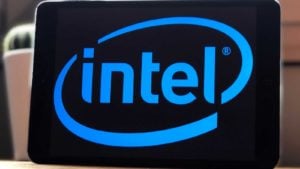The Nasdaq stocks are known as high-flying growth plays, not necessarily buy-and-hold candidates. Electric vehicles, biotechnology, social networking stocks, cloud software companies and the like.
These are the sort of companies that can go up five- or 10-fold if their businesses find sustained market success. On the other hand, these kinds of stocks can easily end up losing most of their value if anything goes wrong and/or there is a broader correction in the tech sector.
Though the stock market has started to recover a bit, most stocks are still well in the red for 2022. The Nasdaq has performed particularly poorly this year. Falling consumer demand for tech products and services, growing layoffs in the sector and a dimming macroeconomic environment have all added to investor concerns.
However, for long-term investors, this sharp decline has created numerous opportunities within the tech sector. There are plenty of Nasdaq stocks in sectors other than technology. This gives investors plenty of good choices for building a long-term buy-and-hold portfolio full of Nasdaq stocks. Here are seven good picks heading into 2023.
| INTC | Intel | $28.60 |
| JD | JD.com | $60.35 |
| XEL | Xcel Energy | $69.32 |
| PEP | PepsiCo | $181.63 |
| IBKR | Interactive Brokers | $78.72 |
| NDAQ | Nasdaq | $67.01 |
| NEOG | Neogen | $15.48 |
Intel (INTC)

The wheels have come off for Intel (NASDAQ:INTC), or at least it looks that way judging by the stock price. INTC stock has lost more than half its value since its recent peak. Zooming out, the stock price has been essentially flat dating back to 2002, marking twenty years of minimal returns aside from the dividend.
Understandably, many investors are throwing in the towel on the semiconductor giant. Intel has long held a dominant grip on chips for PCs and servers.
Its leading market position has come under fire from a resurgent Advanced Micro Devices (NASDAQ:AMD), among other competitors. However, Intel’s long-term position isn’t as bad as it might seem.
That’s because many of Intel’s issues are short-term in nature. PC and tablet demand is down an estimated 11.9% this year, followed by projections of another sizable decline in 2023.
Simply put, everyone bought new computers during the pandemic. This pulled forward demand and led to a plunge in sales for 2022. However, PCs and tablets still wear out and break over time. Demand should normalize at or around pre-pandemic levels in due time.
Meanwhile, there’s good news. The federal government’s CHIPS Act program to aid American semiconductor manufacturers will offer a huge boost to Intel specifically. It’s a great time to buy this semiconductor giant for the long-term with shares down so sharply and the stock now offering a 5.0% dividend yield.
JD.com (JD)

It’s been a brutal year for Chinese stocks. It’s not just that their share prices have plunged. Plenty of firms have seen that happen this year.
The bigger problem is that with the weakening relations between the United States and China, there is now the threat of a mass delisting of Chinese stocks from American exchanges. This is a hard-to-quantify but real risk. That said, there have been some potential progress toward reducing this risk.
Regardless, China still has more than a billion people and many of them are going to shop online. JD.com (NASDAQ:JD) is one of the country’s most promising e-commerce services.
It has built a reputation for higher product quality standards than its rivals, which has been a big selling point in a market that has a problem with knock-off and counterfeit goods. In addition, JD has invested heavily in logistics, which has powered fast and reliable delivery schedules.
JD stock has recovered significantly in recent weeks. That said, shares are still off about 40% from their 2021 peak. And the market capitalization remains just below the $100 billion mark. That’s a pretty small figure for a company whose annual sales are expected to top $170 billion in 2023.
Xcel Energy (XEL)

Xcel Energy (NASDAQ:XEL) is a Minneapolis-based power utility. The company primarily sells electricity and natural gas to consumers. With a greater than $35 billion market capitalization, Xcel is one of the larger publicly traded American power utilities.
What’s the appeal of a power utility today? The sector is known for operating steady, recession-proof businesses. Electricity operators throw off a ton of cash and tend to hold up during downturns. Electric vehicles also add to the appeal. A sizable portion of total energy usage moving from gasoline to the grid should be a strong long-term demand driver for the utility industry.
Investors think of the Nasdaq as being full of technology companies, but some more conservative income-generating companies like Xcel are attractive when looking for Nasdaq stocks to buy and hold.
XEL stock is effectively flat on the year so far. That shows the appeal of owning this sort of defensive company within a broader portfolio of Nasdaq stocks.
Pepsico (PEP)

PepsiCo (NASDAQ:PEP) is one of the safest and most reliable blue chip stocks listed on the Nasdaq.
PepsiCo is rarely a high-flying stock in any given year. Over time, however, the company’s shares have steadily marched upward, with an average annual return exceeding 12% over the past decade. The company is also a dividend machine. It has increased its annual dividend for 50 years in a row, putting it among the elite Dividend Kings.
PEP stock might look expensive at first glance. Shares are trading around 27 times forward earnings, after all. The valuation doesn’t scream value at today’s price.
For a portfolio of buy-and-hold stocks, however, PepsiCo still slots in well. The company’s strong brands, global reach, and proven leadership make this an easy company to hold onto for an extended time span.
Interactive Brokers (IBKR)

Interactive Brokers (NASDAQ:IBKR) is a leading discount brokerage firm. The company services a wide variety of customers ranging from small retail accounts to registered financial advisors to hedge funds.
Interactive Brokers has a global reach, offering services to investors in dozens of countries. It also offers a vast array of tradable markets, including Europe, Asia and even emerging markets such as Mexico, which are all available within a single trading account.
The obvious appeal to IBKR stock today is rising interest rates. The company earns a substantial portion of revenue from its margin loans to customers. The rate on its margin loans has surged from 1.6% to 5.3% amid the Federal Reserve’s continued rate hikes. It’s not just more interest, commissions also tend to increase as people trade more during volatile markets.
Interactive Brokers is more than just a near-term interest rate play. Founder Thomas Peterffy is a visionary within the brokerage services industry and has built his company to thrive on a generational timeframe. The company’s relentless focus on low costs and best-in-industry trading executions has led to a loyal following among professional traders.
This should make Interactive a winner as the brokerage industry continues to consolidate.
Nasdaq (NDAQ)

One good way to invest in the growth of the tech industry is to own the Nasdaq (NASDAQ:NDAQ) itself. That’s right, the Nasdaq stock exchange is a publicly traded company whose stock is, only fittingly, traded on its own exchange.
What’s the investment rationale for owning a stock exchange? For one, as Nasdaq obtains more listing and trading activities, that naturally leads to more fees and incidental revenue for its owners. Every new initial public offering is an opportunity for Nasdaq to earn more fees going forward.
But there’s much more than just market activity. Nasdaq has pushed into corporate services, market technology, and data sales. Arguably the data business is the most promising; as more and more algorithm-driven trading occurs, Nasdaq’s heaps of historical market data are an invaluable resource.
The company has turned these assets into tremendous growth, with NDAQ stock compounded at more than 24% per year over the past decade.
Neogen (NEOG)

Neogen (NASDAQ:NEOG) is a mid-sized Michigan-based company focused on food safety and animal health products. NEOG stock is one of the Nasdaq’s unheralded winners. Shares traded for just $1/share (split-adjusted) in 2000 and hit $50 last year.
Then disaster struck. The company’s share price fell by half earlier this year as traders sold off companies with high valuations. Adding insult to injury, this fall, Neogen executed a complicated merger with the food safety division of industrial conglomerate 3M (NYSE:MMM). That merger close to doubled the size of Neogen’s business but diluted the stock significantly and led to another swift selloff in NEOG stock.
At the worst of it, Neogen was down to $11, off more than 75% from its recent highs. That was a remarkable fall for a company that has a strong history of profitability and which has grown earnings at a double-digit compounded rate dating back to the turn of the century.
It’s not like food safety and animal health are any less important now than they used to be, either. This is a golden opportunity for investors to pick up this proven long-term compounder at a deeply-discounted entry point.
On the date of publication, Ian Bezek held a long position in NEOG, MMM, NDAQ, and INTC stock. The opinions expressed in this article are those of the writer, subject to the InvestorPlace.com Publishing Guidelines.
